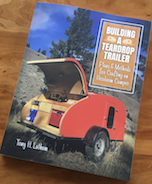Truck camper questions and ideas
Moderator: eaglesdare
8 posts
• Page 1 of 1
Truck camper questions and ideas
So I have been wanting to build a pop up truck camper similar to fwc project M for a while, basically a pop up truck camper on the bedrails with no tub. my plans are to use 2x2 framing, 1.5 inch foam, to skin the interior/exterior with 1/5 inch ply, cover with 3 layers of 6oz fiberglass cloth polyester resin, and then to paint with topside paint. I'm looking for advice or ideas on the build. Is the camper going to be strong enough with the 2x2 minimal framing and 1/5 ply with 3 layers of glass? Should I use a router and round over bit on all the corners and fill with Bondo, wood filler? Or just use fiberglass tape on corners before covering with additional layers of glass?
- Williamrf
- Teardrop Inspector
- Posts: 2
- Joined: Sat Dec 11, 2021 8:22 pm
Re: Truck camper questions and ideas
I'll answer the one question I'm confident about.
It'll be a lot easier to glass the corners if they are rounded. Nearly impossible if they are at 90º. Or at least a bear. And since the corner is supported by a 1.5" frame, why Bondo? The round-over bit will create a uniform radius.
Why polyester resin? I switched to epoxy years ago and won't go back.
Tony
Should I use a router and round over bit on all the corners and fill with Bondo, wood filler?
It'll be a lot easier to glass the corners if they are rounded. Nearly impossible if they are at 90º. Or at least a bear. And since the corner is supported by a 1.5" frame, why Bondo? The round-over bit will create a uniform radius.
Why polyester resin? I switched to epoxy years ago and won't go back.

Tony
-

tony.latham - Gold Donating Member
- Posts: 7011
- Images: 17
- Joined: Mon Jul 08, 2013 4:03 pm
- Location: Middle of Idaho on the edge of nowhere





